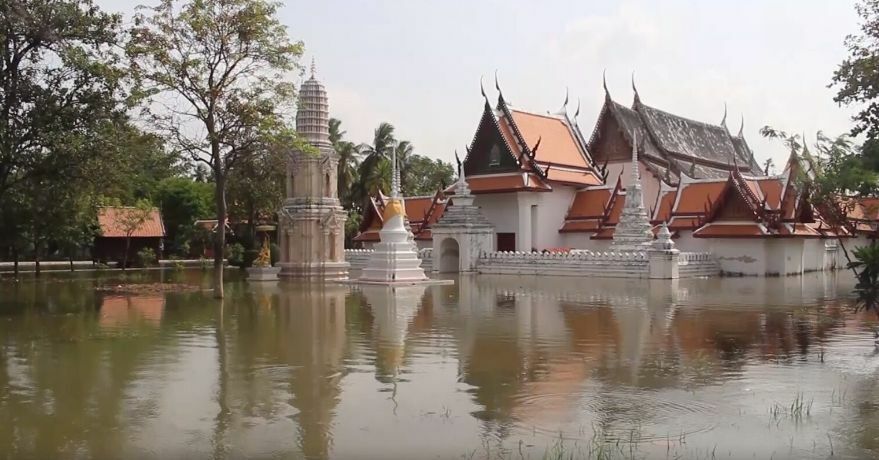Flood prevention measures secure Phetchaburi for monsoon season

The province of Phetchaburi is preparing in advance this year for monsoon-induced flooding from September to October, with measures in place to minimise damage and inconvenience to locals. Key to these flood prevention efforts is the Kaeng Krachan and Mae Prachan dams, both currently low and ready to absorb the impending rainfall.
Each year, Phetchaburi experiences flooding during the rainy season, much to the detriment of its residents, particularly between September and October. This year, the authorities are ready with a flood prevention plan to tackle the situation with the help of the Kaeng Krachan and Mae Prachan dams.
The dams, currently at low levels, will serve as the primary receptacles for the oncoming rainwater to prevent flooding in the city. Flood prevention efforts are also underway to prepare for rainfall beneath the dam, along with setting up equipment such as water pumps, pushers and backhoes to assist those affected.
Director of the Phetchaburi Irrigation Project, Somkiat Jamchan announced they are fully prepared to deal with the floods this year and have particularly focused on prevention modelling the province.
“We have workforce readiness, designated points for resources, and especially, we have prepared water pumps, pushers, sandbags, and cranes, especially in the Kaotakrao area. We have installed water pushers and have also accelerated the collection of waste that obstructs waterways.”
The lessons from the management of water over the past three years when Phetchaburi did not face flooding, will come in handy this year as well. Local authorities are prepared with machinery and modelling plans learned from previous experiences, having notified both the Minister of Agriculture and the Director-General of the Department of Irrigation.
This year, efforts are underway to ensure that the flooding does not affect Phetchakasem Road, one of the main roads in the area. The authorities have a prevention plan for draining water at any problematic point where flood accumulation is anticipated, reported KhaoSod.
“At present, the large reservoir, Kaeng Krachan Dam, has a 70% free space with only 30% of its capacity filled. However, if it rains 100 millimetres to 200 millimetres above the dam, it will fill the entire reservoir. But concern arises if it rains 100 to 200 millimetres at Kaeng Krachan and the end of the Kaeng Krachan catchment area, creating a large volume of water at the end of the dam which needs to flow to the Phetch Dam.
“Even if it keeps raining in October, if it overflows at the Kaeng Krachan Reservoir, we have a plan to handle that. Even in case of an overflow, we will control the outflow through the outlet pipe as long as we can. We will plan according to water levels. If the lower part is still flooding and the rain continues, and the river is calm at the end of Phetch Dam, we will try to use Kaeng Krachan Dam and Mae Prachan Dam to store as much as possible.”
The Mae Prachan Dam also has 70% of its capacity available for further water storage. This ability to store water will be beneficial in disaster prevention if there are sudden weather changes or flash floods.
In such a situation, even if the spillway is overflowing, the priority would be to keep the sea level from rising – creating a space to release a mass of water into the Phet River, effectively managing the water level. The Irrigation Department will do its utmost to manage using the available reservoirs for maximum safety for effective flood prevention in the province.
Latest Thailand News
Follow The Thaiger on Google News:


























